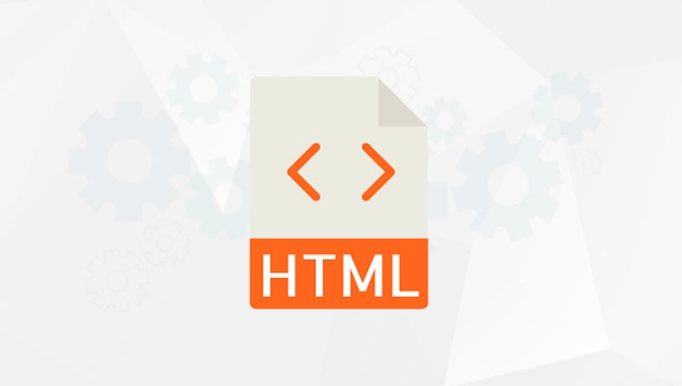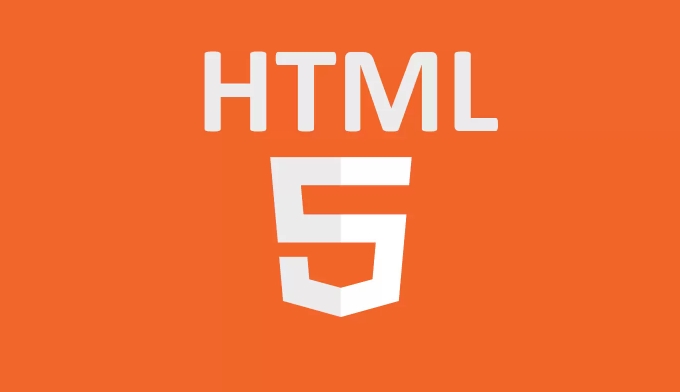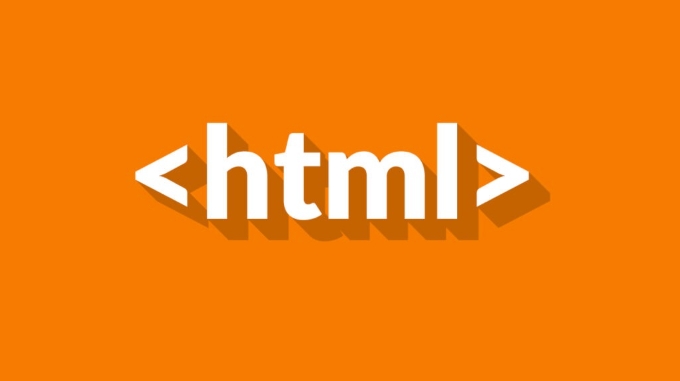The lang attribute is used to specify the language of text in HTML elements. Its main functions include: 1. Improve accessibility and enable screen readers to pronounce correctly; 2. Optimize SEO to help search engines accurately index according to language; 3. Influence the browser's spelling check and style processing. In addition, it can also affect the layout display of the mobile virtual keyboard. Usually placed in tags, such as , can also be used for local language annotations, such as Je t'aime. When using it, you should ensure that the language code conforms to the actual content. Common codes include en, es, fr, de, ja, etc.

The lang attribute in an HTML tag is used to specify the language of the text content within that element. It's a way to tell browsers, search engines, and assistive technologies what language the page or part of the page is written in.
 tag for?" />
tag for?" /> Why use the lang attribute?
There are a few practical reasons why setting the correct language matters:
- Accessibility : Screen readers can switch to the appropriate pronunciation rules for that language.
- Search Engine Optimization (SEO) : Search engines can index your content more accurately by language, which helps with regional targeting.
- Styling and Spellchecking : Some browsers might apply different spell-checking or styling rules based on the language.
You usually see it at the top of the HTML document like this:
 tag for?" />
tag for?" /><html lang="en">
This tells everyone that the whole page is in English.
But you can also use it on smaller elements if part of your page switches language:
 tag for?" />
tag for?" /><p>Here is a sentence in French: <span lang="fr">Je t'aime</span>.</p>
How does it help screen readers?
Screen readers rely on the lang attribute to correctly pronounce words. For example:
- If you write "read" without specifying the language, a screen reader may not know whether it's present tense (reed) or past tense (red).
- But if you mark it as Spanish (
lang="es"), the screen reader knows to use Spanish pronunciation rules.
So when writing multilingual content, always consider adding the right lang value to avoid confusion.
Some common language codes include:
-
en– English -
es– Spanish -
fr– French -
de– German -
ja– Japanese
Can it affect how browsers handle form inputs?
Yes — in some cases, changing the lang attribute can influence how browsers display virtual keyboards on mobile devices. For example, if a user focus on an input field inside a <div lang="ja"> , their phone might automatically switch to a Japanese keyboard layout.
Also, some browsers might use the language setting to suggest auto-corrections or translations depending on the context.
Where should I put it?
It's most commonly added to the opening <html> tag, like:
<html lang="en">
But again, you can use it anywhere in the document:
<h1 lang="es">Bienvenidos</h1> <p lang="zh">Welcome to our website. </p>
Just remember: if you're using it on a small section, make sure it actually changes the language context. Otherwise, it doesn't add much value.
Basically that's it. Setting up a language seems small, but it has a significant impact on accessibility and content recognition, especially multilingual websites.
The above is the detailed content of What is the lang attribute on the tag for?. For more information, please follow other related articles on the PHP Chinese website!

Hot AI Tools

Undress AI Tool
Undress images for free

Undresser.AI Undress
AI-powered app for creating realistic nude photos

AI Clothes Remover
Online AI tool for removing clothes from photos.

Clothoff.io
AI clothes remover

Video Face Swap
Swap faces in any video effortlessly with our completely free AI face swap tool!

Hot Article

Hot Tools

Notepad++7.3.1
Easy-to-use and free code editor

SublimeText3 Chinese version
Chinese version, very easy to use

Zend Studio 13.0.1
Powerful PHP integrated development environment

Dreamweaver CS6
Visual web development tools

SublimeText3 Mac version
God-level code editing software (SublimeText3)

Hot Topics
 How can CSS be used to implement dark mode theming on a website?
Jun 19, 2025 am 12:51 AM
How can CSS be used to implement dark mode theming on a website?
Jun 19, 2025 am 12:51 AM
ToimplementdarkmodeinCSSeffectively,useCSSvariablesforthemecolors,detectsystempreferenceswithprefers-color-scheme,addamanualtogglebutton,andhandleimagesandbackgroundsthoughtfully.1.DefineCSSvariablesforlightanddarkthemestomanagecolorsefficiently.2.Us
 Can you explain the difference between em, rem, px, and viewport units (vh, vw)?
Jun 19, 2025 am 12:51 AM
Can you explain the difference between em, rem, px, and viewport units (vh, vw)?
Jun 19, 2025 am 12:51 AM
The topic differencebetweenem, Rem, PX, andViewportunits (VH, VW) LiesintheirreFerencepoint: PXISFixedandbasedonpixelvalues, emissrelative EtothefontsizeFheelementoritsparent, Remisrelelatotherootfontsize, AndVH/VwarebaseDontheviewporttimensions.1.PXoffersprecis
 What are CSS Houdini APIs, and how do they allow developers to extend CSS itself?
Jun 19, 2025 am 12:52 AM
What are CSS Houdini APIs, and how do they allow developers to extend CSS itself?
Jun 19, 2025 am 12:52 AM
CSSHoudini is a set of APIs that allow developers to directly manipulate and extend the browser's style processing flow through JavaScript. 1. PaintWorklet controls element drawing; 2. LayoutWorklet custom layout logic; 3. AnimationWorklet implements high-performance animation; 4. Parser&TypedOM efficiently operates CSS properties; 5. Properties&ValuesAPI registers custom properties; 6. FontMetricsAPI obtains font information. It allows developers to expand CSS in unprecedented ways, achieve effects such as wave backgrounds, and have good performance and flexibility
 What is the significance of Vue's reactivity transform (experimental, then removed) and its goals?
Jun 20, 2025 am 01:01 AM
What is the significance of Vue's reactivity transform (experimental, then removed) and its goals?
Jun 20, 2025 am 01:01 AM
ReactivitytransforminVue3aimedtosimplifyhandlingreactivedatabyautomaticallytrackingandmanagingreactivitywithoutrequiringmanualref()or.valueusage.Itsoughttoreduceboilerplateandimprovecodereadabilitybytreatingvariableslikeletandconstasautomaticallyreac
 How can CSS gradients (linear-gradient, radial-gradient) be used to create rich backgrounds?
Jun 21, 2025 am 01:05 AM
How can CSS gradients (linear-gradient, radial-gradient) be used to create rich backgrounds?
Jun 21, 2025 am 01:05 AM
CSSgradientsenhancebackgroundswithdepthandvisualappeal.1.Startwithlineargradientsforsmoothcolortransitionsalongaline,specifyingdirectionandcolorstops.2.Useradialgradientsforcirculareffects,adjustingshapeandcenterposition.3.Layermultiplegradientstocre
 What are the key differences between inline, block, inline-block, and flex display values?
Jun 20, 2025 am 01:01 AM
What are the key differences between inline, block, inline-block, and flex display values?
Jun 20, 2025 am 01:01 AM
Choosing the correct display value in CSS is crucial because it controls the behavior of elements in the layout. 1.inline: Make elements flow like text, without occupying a single line, and cannot directly set width and height, suitable for elements in text, such as; 2.block: Make elements exclusively occupy one line and occupy all width, can set width and height and inner and outer margins, suitable for structured elements, such as; 3.inline-block: has both block characteristics and inline layout, can set size but still display in the same line, suitable for horizontal layouts that require consistent spacing; 4.flex: Modern layout mode, suitable for containers, easy to achieve alignment and distribution through justify-content, align-items and other attributes, yes
 How can internationalization (i18n) and localization (l10n) be implemented in a Vue application?
Jun 20, 2025 am 01:00 AM
How can internationalization (i18n) and localization (l10n) be implemented in a Vue application?
Jun 20, 2025 am 01:00 AM
InternationalizationandlocalizationinVueappsareprimarilyhandledusingtheVueI18nplugin.1.Installvue-i18nvianpmoryarn.2.CreatelocaleJSONfiles(e.g.,en.json,es.json)fortranslationmessages.3.Setupthei18ninstanceinmain.jswithlocaleconfigurationandmessagefil
 How does provide and inject allow for deep component communication without prop drilling in Vue?
Jun 20, 2025 am 01:03 AM
How does provide and inject allow for deep component communication without prop drilling in Vue?
Jun 20, 2025 am 01:03 AM
In Vue, provide and inject are features for directly passing data across hierarchical components. The parent component provides data or methods through provide, and descendant components directly inject and use these data or methods through inject, without passing props layer by layer; 2. It is suitable for avoiding "propdrilling", such as passing global or shared data such as topics, user status, API services, etc.; 3. Note when using: non-responsive original values ??must be wrapped into responsive objects to achieve responsive updates, and should not be abused to avoid affecting maintainability.






